The Metropolitan Cathedral of Iași
Strolling the boulevard: The “Roset-Roznovanu” Palace
After I finish admiring the Monastery of the Holy Three Hierarchs, I continue my stroll on the Boulevard Stephan the Great and Holy and pass by other little street stores and also, on the right side of it, I observe the building housing the city Hall of Iasi, a construction with a very beautiful exterior aspect built, as much as I can see, in a clear neoclassical style.
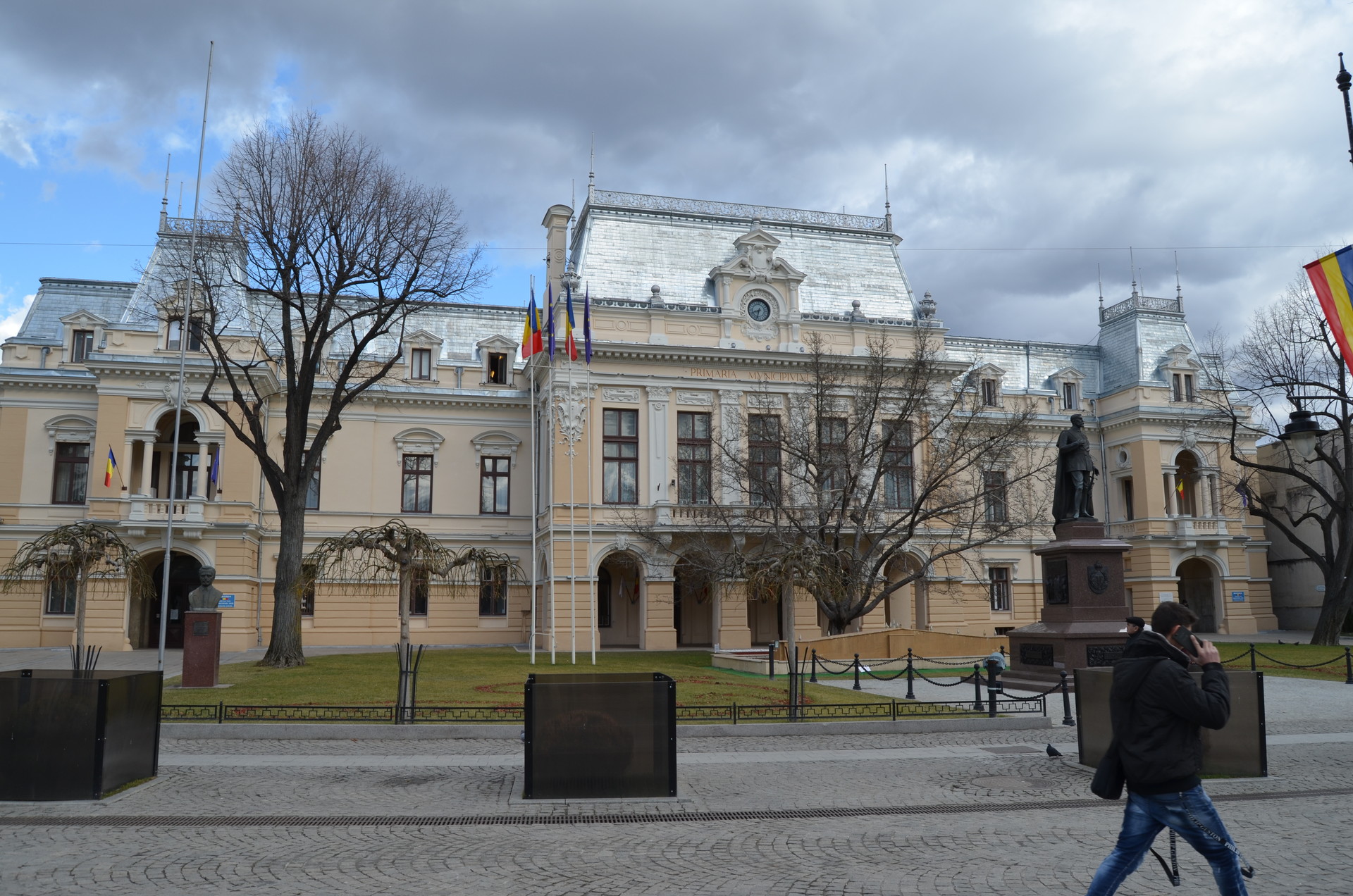
Actually, the historical monument is dating back to the 18th century and is known as the “Roset-Roznovanu” Palace, bearing the name of the family that used to live here. However, at the end of the 19th century, the palace became a temporary residence for the royal family.
Finding the Metropolitan Cathedral of Iasi: the architecture of it
Going forward, on the opposite side of the city hall, I start to notice the mighty construction of the Metropolitan Cathedral of Iasi and I am already getting impressed by its clear, harmonic and authentic architecture.
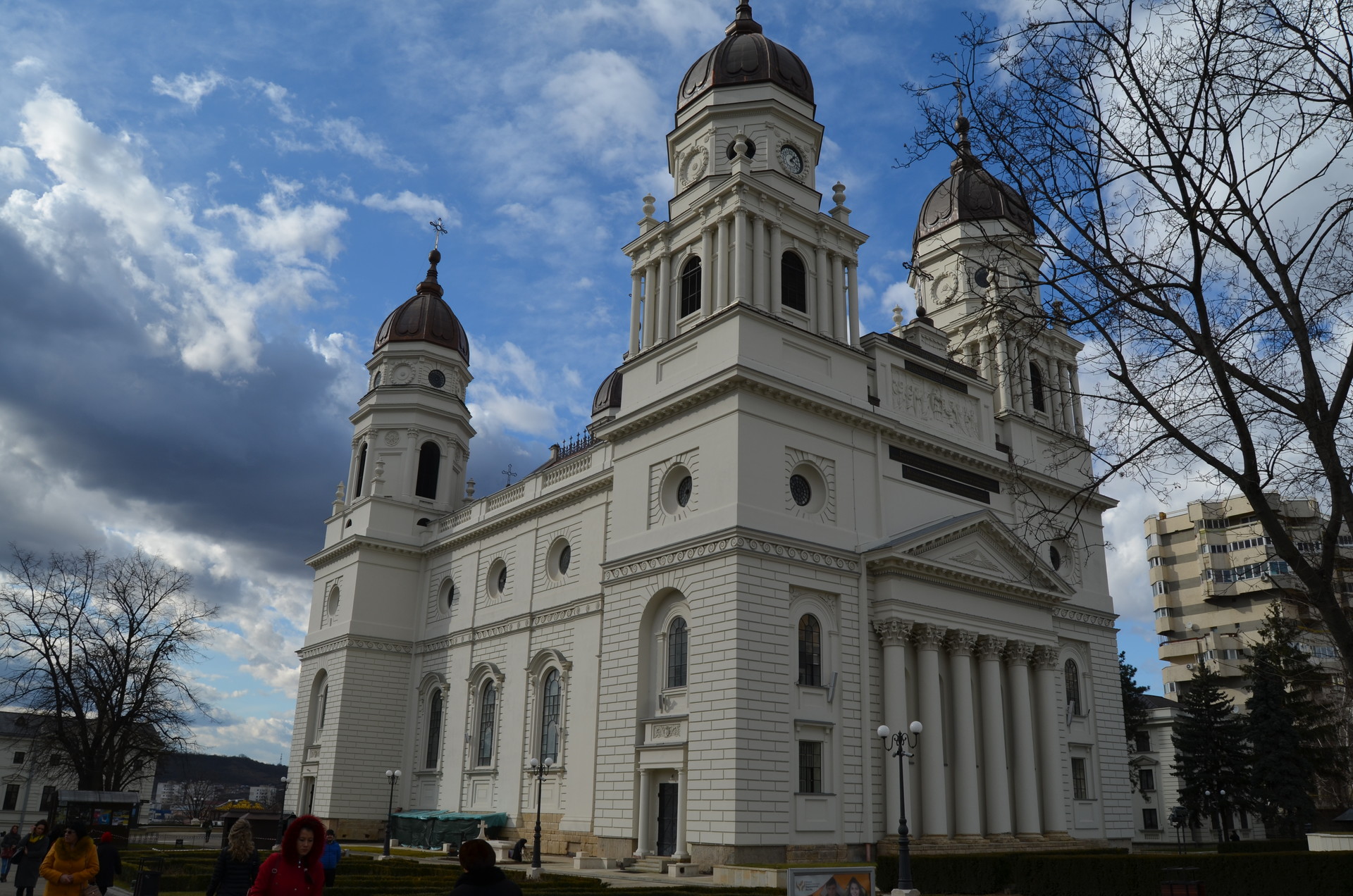
By reading the informative boards, I find out that the building I am looking at is dating back to the end of the 19th century, being designed in neoclassical style, but having also elements inspired by the Italian Renaissance and other baroque archiectuaral elements. The architect who finalized the plans of the cathedral was Alexandru Oraescu.
“Moldova’s Jerusalem”: many christian buildings
As I enter the yard, I realize that the cathedral is not standing by itself in this space, but rather, what I am visiting right is The Metropolitan assembly of Iasi also famous as “Moldova’s Jerusalem” or “The mother of Moldavia’s churches. Thus, it is visible that the cathedral’s construction dominates the place and stands out the most among all of the other building which are part of the complex.
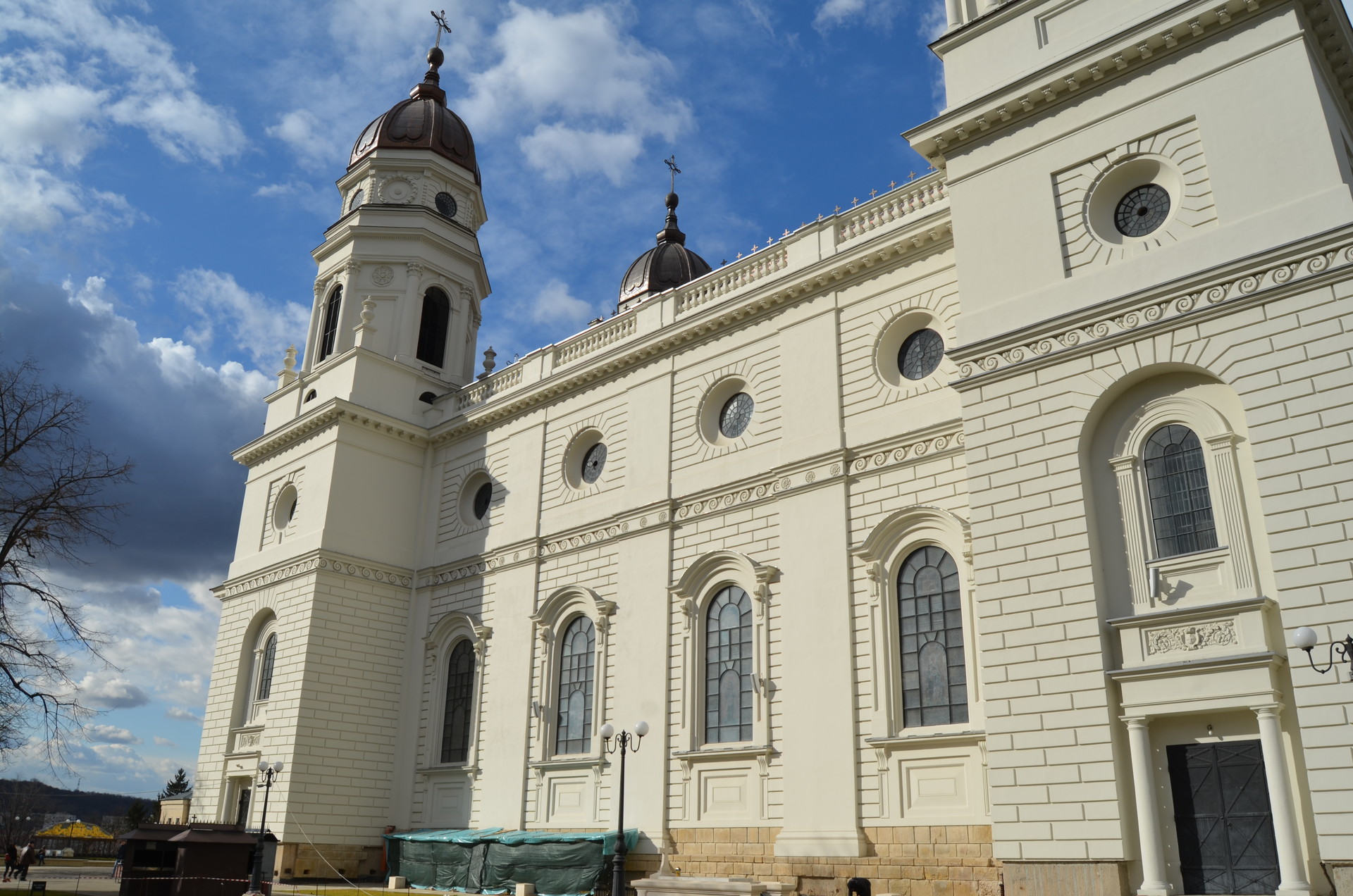
Speaking of these, surrounding the central area, are found edifices such as St. George's Church, the Metropolitan Palace, the Metropolitan Chancellery, the ecumenical library "Dumitru Stăniloae", the monastery of St. George and so on. After observing all of these other buildings, I can understand better why the place is named “Moldova’s Jerusalem”.
The outside appearance of the orthodox cathedral
What gets my attention is the monumentality of the metropolitan cathedral, I feel so small walking by its side. Although all of the façade are simply decorated, the construction is impressive and imposing through its definite shapes and perfection. An aspect that I appreciate in particular is linked with the fact that the construction appearance seems brand new, the white of the walls is without any stain and every little detail is cared of.
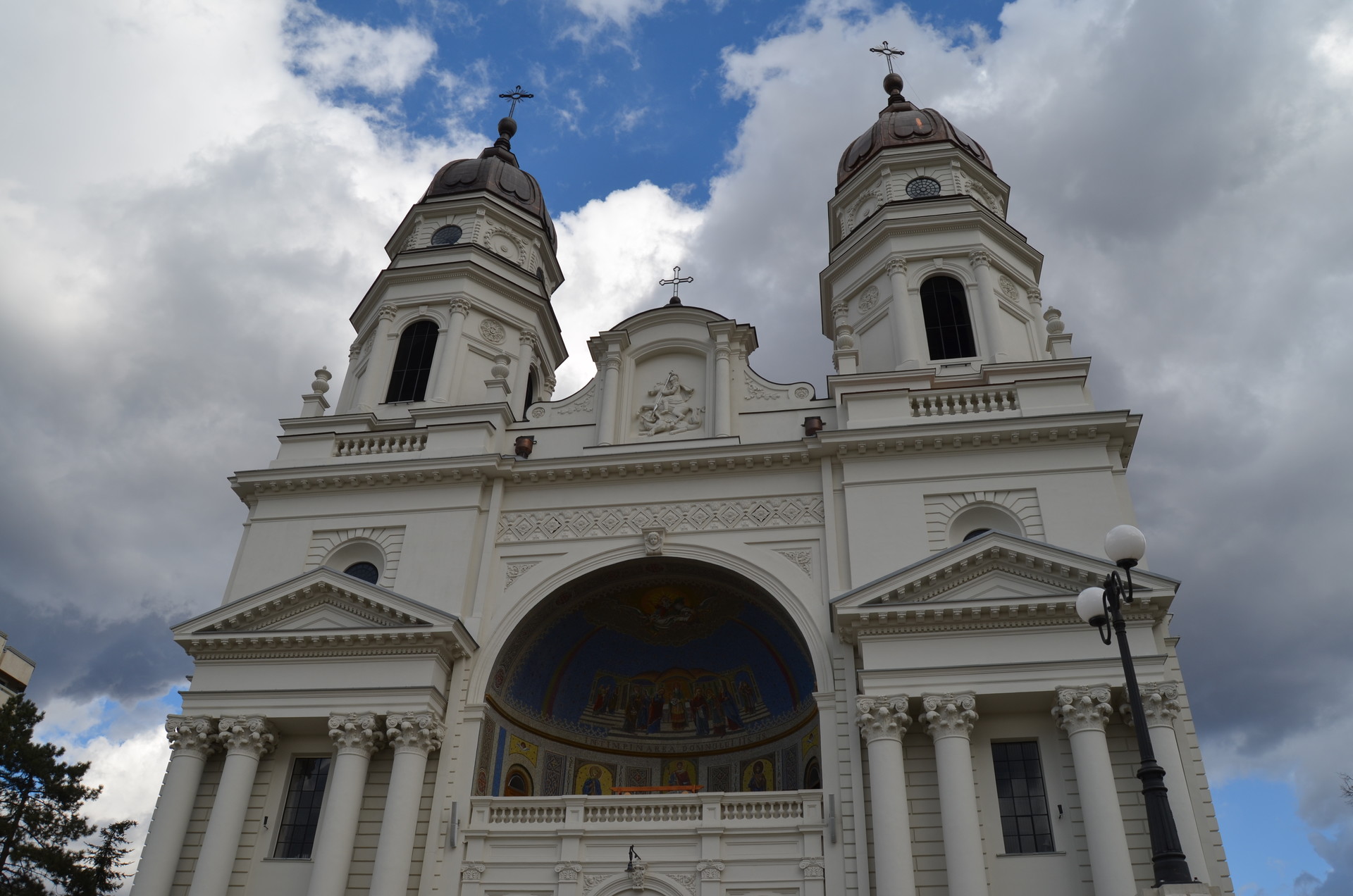
The large mosaic of the western facade
I am searching for the entrance of monument and when I arrive at the western façade, I am totally blown away by a colorful mosaic which is placed above the entrance. I thought that all of the exterior decorations of the cathedral are white and plain and I was so wrong! Thus, the artwork of the mosaic is highlighted beautifully by the other bright parts of the construction.
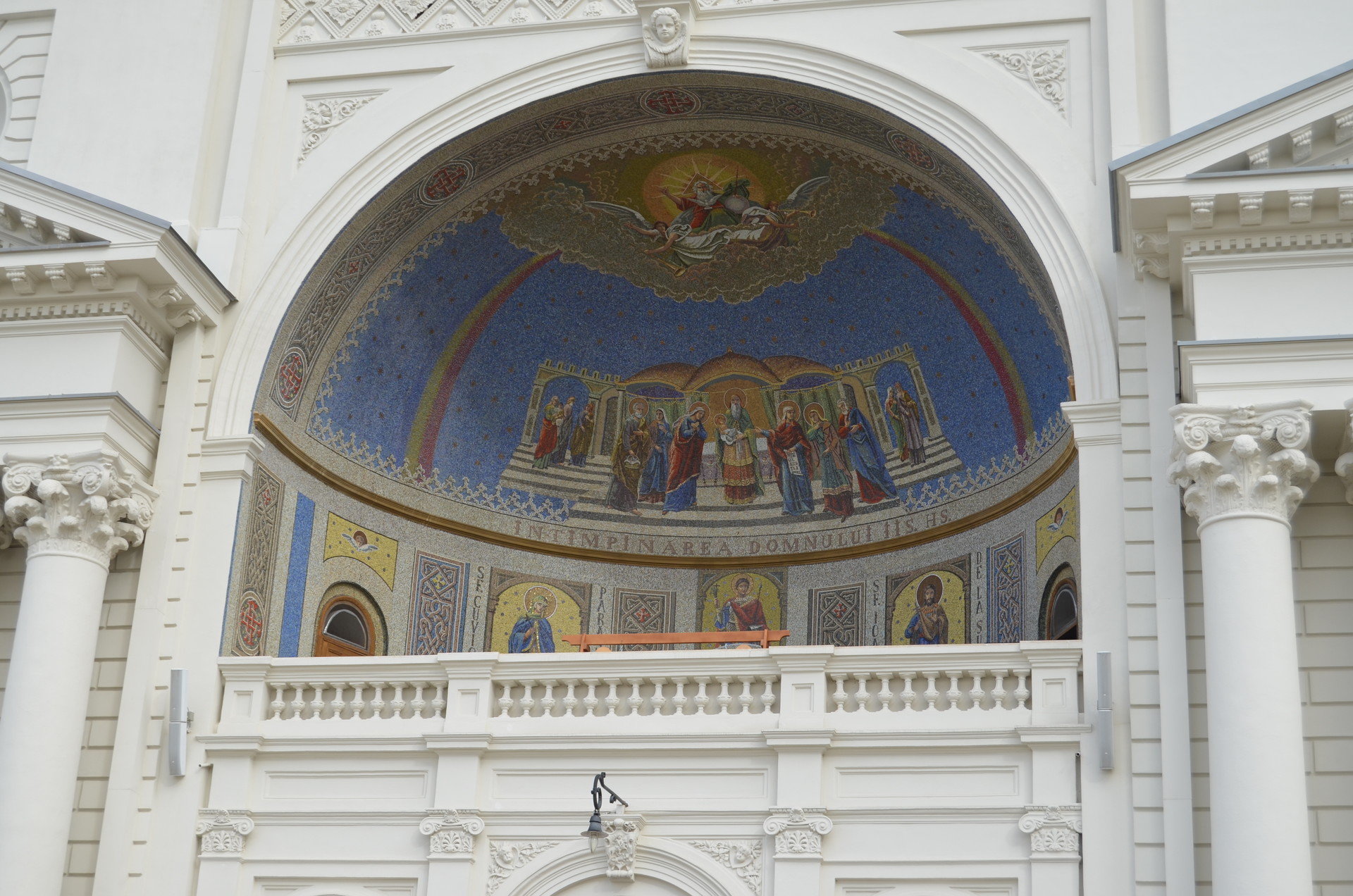
The main illustrated scene of the vaulted semicircular mosaic is representing the Lord's Welcome to Jerusalem, a typical subject when it comes to the orthodox painted images.
How the cathedral looks like on the inside? Taking photos or not?
After seeing the outside, I am now curious to discover how the interior looks like, thus, I am heading towards the western entrance and I step into the cathedral through a massive door. Unfortunately, I am not sure if I can take or not photographs here and, because I notice that there are lots of people being part of a sermon or praying, I decide not to photograph this time, I don’t want to disturb them.
Somehow, it feels like my friend and I are the only visitors and the rest of the humans are citizens, those who usually come here for praying or listening the Sunday services. If you go here and encounter a similar situation, I kind of encourage you to have the same attitude as me because is better to not interrupt the rituals of the believers and to treat them with respect. There is not entrance fee for visiting or looking around inside the Metropolitan Cathedral.
The mural paintins of the walls
As any other orthodox church, the interior of this one is filled with paintings representing either biblical scenes or images of saints. Speaking of that, the mural paintings have been created by a well-known Romanian artist, namely, Gheorghe Tatatrescu. Besides the religious images, on the entrance wall are painted in the aim of always being remembered, the portraits of King Carol I and Queen Elisabeta as well as the faces of Veniamin Costachi and Iosif Naniescu, the first one started the project of the cathedral and the last one finished.
The light is getting through same decorated stained glass windows. The colors dominating the interior are gold, blue and red. The altar, which is the main piece of any orthodox building stands out due to the ornaments carved out of lime wood with lots of vegetal motifs such as stems, flowers and acanthus leaves. The chandeliers are enormous and quite appealing or catchy too.
The relics of saints
A let’s say interesting thing that you might find along many orthodox churches in Romania is the presence of relics belonging to the Saints. For example, in the Metropolitan cathedral that I am visiting right are placed the relics of the Holy Parascheva, a saint which is considered to be the protector of Moldova.
Every year, on the saint is celebrated, many people come here from all of the corners of the country to worship and pray. Actually, this particular cathedral is counted among the largest places of worship in Romania. Plus, if you didn’t hear about it before, Moldova, from all of the regions of Romania, have the highest number of churches and monasteries.
Saying good bye to Iași
My journey through the city of Iasi comes finally to an end, the Metropolitan cathedral being the last attraction I get to visit before I embark on my train and head back to Bucharest. During my 2 days city break I have seen lots of beautiful places and monuments and I am sure that I have also missed a few which would have been worth exploring too, but who knows, maybe in the upcoming days I will return in Iasi. If you are planning in either visiting the city or are thinking about having an exchange mobility here and want to find more about this region, on my blog Discovering the city of Iași I have included all of the places I got to experience myself.
Last but not least, going back to Cuib for a bit more of the delicious food
Because we are hungry, before going to the railway station for catching our train, my friend and I decide to go back to Cuib (“Cuib”, a restaurant for a bright future), a restaurant in which we have eaten in the first day of our stay and that we enjoyed so much – about you can also read in one of my previous articles – and order same of their delicious foods but for take away. And here we are, back at Cuib ordering the vegan sandwiches that end up to be enormous, so satisfying and tasty, but because we are in a rush and don’t have enough time to eat in the restaurant, we take away the food and eat in the train, while we are moving back to Bucharest.
A few after thoughts about my visit in this part of the country
As a small conclusion after my trip in Iasi, a city in which I haven’t been before, I can admit that regarding tourism, there are plenty of things to see and discover here, although, as far as I have noticed from the statistics, this historical region of Moldavia, doesn’t get that many tourists or visitors as the region of Transylvania for example. Thus, I hope that in the future, this thing will change little by little and those eastern places of the country will develop more and get much credit for what they have to offer.
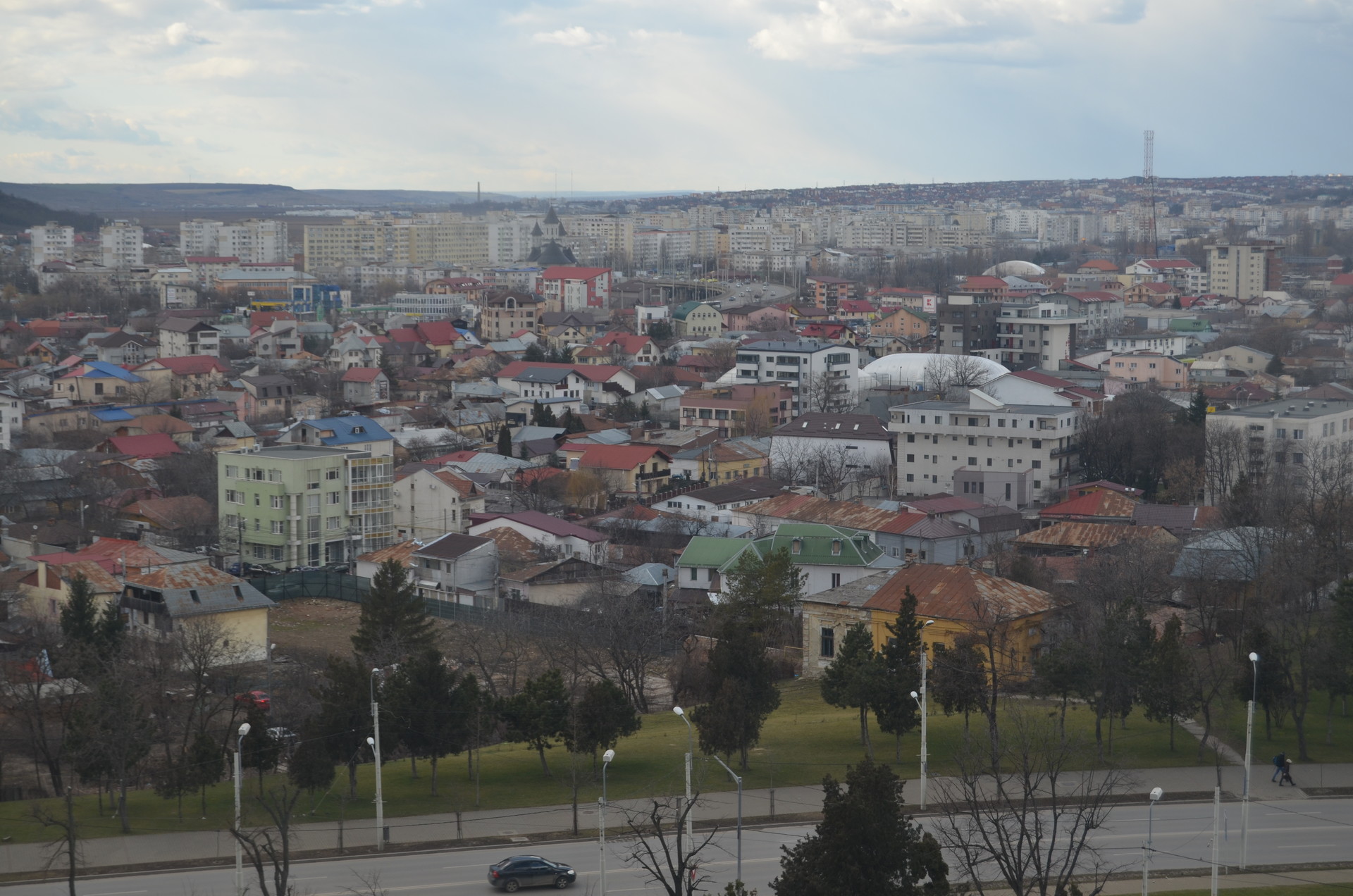
Photo gallery
Want to have your own Erasmus blog?
If you are experiencing living abroad, you're an avid traveller or want to promote the city where you live... create your own blog and share your adventures!
I want to create my Erasmus blog! →





















Comments (0 comments)